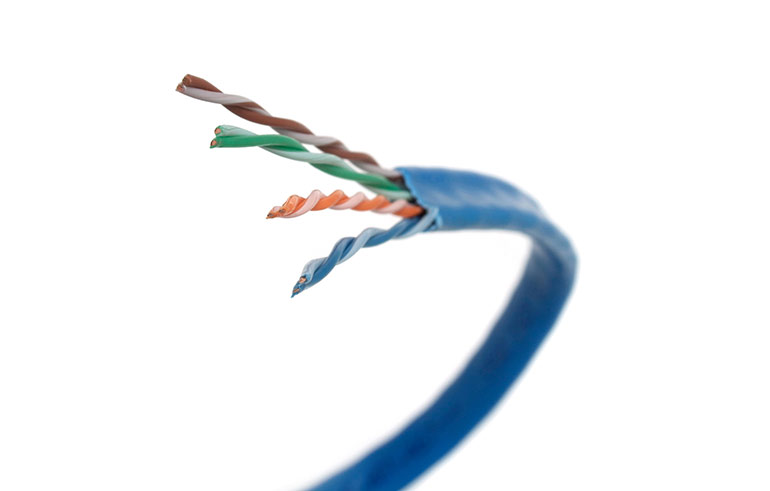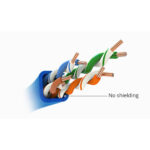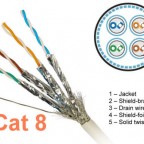Contributed by Frances Richards
Unshielded twisted pair (UTP) cable is comprised of anywhere from two to 1800 unshielded twisted pairs of 100-ohm copper encased in an outer plastic jacket. This widely used data communication cable is most commonly found in local area networks (LANs) for applications such as computer networking, telecommunications, and Ethernet networks. Benefits of UTP cable include its low cost compared to other options, widespread compatibility with most systems and devices, no need for grounding, and a smaller, more flexible size for easier installation than shielded cable. However, because this type of cable has no metallic shield, it offers minimal protection against electrical interference. Let’s take a closer look at some of the main disadvantages of UTP cable and where it should not be used.

UTP cables are susceptible to both electromagnetic interference (EMI) and radio frequency interference (RFI) due to their lack of shielding. Sources of EMI include things like nearby power cables, electronic devices, and other machinery. The result is noise and signal distortion, leading to subpar performance or data errors. Limited transmission distance is another drawback of UTP cables compared to other types of cabling, such as fiber optic cables. As distances increase, UTP cables can suffer from signal attenuation, which leads to reduced signal quality and the potential for data loss. This limitation can be especially challenging in large-scale networks requiring long-distance connectivity. Security is yet another concern with UTP cables. Because they are not shielded, they lack protection against signal interception. This makes UTP cables less secure than their shielded counterparts such as coaxial or fiber optic cables.
Limited bandwidth is another downside to be aware of with UTP cables, as they usually feature lower bandwidth capabilities than shielded cable options such as fiber optic. Although UTP cables work just fine to support standard data rates for most applications, they might not be well suited for high-bandwidth scenarios such as data centers and demanding multimedia environments. Crosstalk between cables is another concern. Because UTP cables are made of multiple twisted pairs within a single cable sheath, there is a potential for crosstalk (interference between pairs) when signals pass through the adjacent pairs. Crosstalk can degrade signal quality, especially when multiple UTP cables are bundled together. Finally, it’s important to be aware of environmental conditions. UTP cables are generally not well suited for harsh environments or outdoor installations without adequate protection. They are more susceptible to damage from physical stress, temperature fluctuations, and moisture compared to weather-resistant or ruggedized cable options.
Specific environments that often benefit from shielded twisted pair (STP) cable versus UTP cable include airports, factories, and medical centers. These settings feature a variety of machines that put out significant amounts of interference. Shielded cables are also a better option when wires need to be run next to powerful motors, fluorescent lighting, or microwave ovens. Keep in mind that any type of powerful magnetic field can cause a UTP network to either run slowly or fail completely.
The key takeaway is to be aware of the limitations of UTP cable. That said, if there are no major concerns with interference, it is often better to avoid the complexity and relatively higher cost of STP cables.






Leave a Reply
You must be logged in to post a comment.